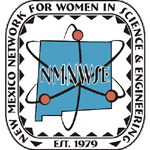 |
Northern Chapter of the New Mexico Network for Women in Science and Engineering LAWIS SEMINAR SERIES https://archive.nmnwse.org/lawis/lunchtalks co-sponsored by the Bradbury Science Museum Talk at 6:30pm, Monday, November 27, 2006 Bradbury Science Museum Auditorium 15th and Central, Los Alamos |

|
|
Investigating Past Earthquakes
on the La Laja Fault System, San Juan Province, Western Argentina Emily Schultz, EES-9, LANL |
Biography - A proud, born-and-raised cheesehead, Emily Schultz received her undergraduate degree in geology from Lawrence University in Appleton, Wisconsin in 2002. After her undergraduate work, she spent nearly two years as a post-baccalaureate fellow on the Seismic Hazards Geology Team in EES Division at LANL. Emily left LANL and New Mexico in 2004 to pursue a master's degree from Oregon State University. She returned to LANL's EES Division in April 2006 to assist the Seismic Hazards Geology Team with a large-scale field project. Emily continued to work on her thesis, successfully defending it in October 2006. This talk is a portion of her master's thesis research.
 | Members and Nonmembers Welcome - Open to the Public |  |
| If you would like to receive electronic LAWIS announcements, please send email to jtg@lanl.gov or see the listserver instructions at https://archive.nmnwse.org/lawis/list.html. You do not need to be a member of LAWIS. |
